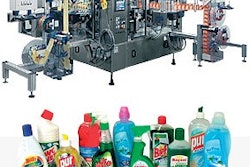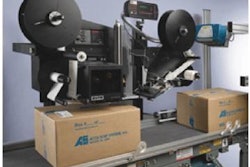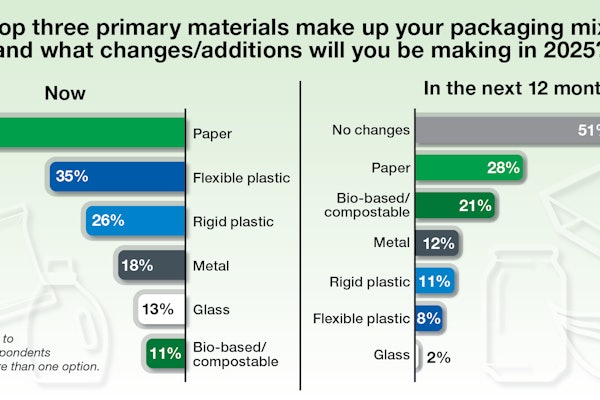The low-cost RFID tag has a cost goal of 5¢, which is driven in part by the many initiatives that are going on at Gillette, Proctor & Gamble, Wal-Mart, and Target to control inventory in the supply chain. Tag cost should not unnecessarily affect the retail cost structure by imposing a overhead burden into the product, just for the sake of inventory control.
To meet this cost target, a new tag technology must be considered.
This cost target has been touted as the “Holy Grail” for the retail RFID tag solution. This target is driven by the replacement concept that dictates that replacement for the bar code be 5¢ or less. Comparing the benefits between the two is like comparing apples and oranges, because of the enormous capabilities of RFID vs. the bar code. Assuming that the 5¢ tag is really the optimum cost target to propel it to a stardom that will entice a broad acceptance by manufacturers, how can this cost target be achieved?
A silicon-based tag solution is not the answer!
The tag technology used today is based upon the integrated circuit (IC) and is connected to an antenna; however, due to the high costs associated with a silicon solution, the system cannot achieve a silicon tag that retails for less than 5¢. A silicon-based solution must have an IC (silicon), an attachment method (wire, solder, gold, epoxy, etc.), and an antenna (printed or stamped).
Printed electronics
There is an exciting technology on the horizon for achieving the less-than-5¢ tag, and it is printable electronics. This technology was developed by researchers at the University of Pennsylvania, during their Nobel-Prize-winning work on semiconducting properties of organic materials in the 1970s. It is in pre-production stages at three companies. OrganicID, Colorado Springs, CO, is working at a 13.56 MHz concept while Motorola, Inc., Schaumburg, IL, and PolyIC FmbH & Co. KG , Erlangen, Germany, are pursuing the 125 kHz range.
The printable transistor is the basis for the printable RFID integrated electronics and can be printed using printing-press technology with nano-inks that are conductive. This process will allow a very low-cost manufacturing process that uses less expensive materials; for example, ink and paper or film versus expensive gases and silicon, which are used in the IC manufacturing process. The process for a silicon-based IC, used in the silicon RFID, is much more costly with manufacturing capital equipment costs alone, which are in the billions of dollars for wafer production versus millions of dollars for a printing plant, not to mention the labor cost differences, etc.
Semiconductor costs
Some semiconductor industry presentations detail the maximum component costs for a 5¢ silicon-based tag: The IC would have to cost between 2¢ and 3¢, and the antenna as well as the assembly would have to cost 1¢ apiece. A presentation has proposed that the cost could be 3.3¢ each and the excess manufacturing fabrication capacity would more than support this cost basis. The probability of achieving these cost goals at best are very aggressive; at the worst, it’s highly improbable.
An example of current silicon pricing could be drawn from the LED, which is a very small IC and has only two connections, the same as required for an RFID solution. However, the best pricing in 500 million quantities remains more than 5¢. Furthermore, in the competitive world of IC manufacturing, if a lower-cost model could have been developed for a product that has been in production for over 30 years, it would have been.
Silicon technology has been around since the early 1960s and has not come close to the cost per square area that can be achieved by a printed solution. So a less-than 5¢ silicon solution does not seem possible.
Printing basics
Printing technology produces a high quality color product, using a very small feature size (1 mil dot size) and is very similar to the technology required to print electronics. The color print process uses four printing plates to create the color pages, one print plate for each of the 4 basic colors (CMYK), while printable electronics uses multiple print plates for each type of printable conductive ink pattern required.
Currently, glossy magazines retail, on average, for $3.97 and average 211 pages that are 8”x10”, equating to 1.57¢ per printed page. If one continues the analysis and assumes that printing conductive materials is 10 times more costly than standard color printing, and that you would harvest only 12 tags (3”x2” business card size) per page, the printable tag would be 1.57¢. That cost represents a fully functional tag with a cost that is realistic and cannot be matched by a silicon solution.
This analysis does not assume any costs for test, other than a go or no/go functional testing process that eliminates any tag that does not respond upon interrogation—during application. The top print layer is the interconnect layer, which includes the antenna. This is a complete tag and needs no further assembly.
In comparison, the cost of a printable solution should be a small percentage of the silicon solution. A printable electronic solution has the cost benefit of being able to print not only the integrated circuit, but the interconnect and the antenna at the same time.
The realistic lowest cost for the “5¢ tag” is printable electronics. When printable, low-cost RFID is commonplace there will be applications that are more market-response driven rather than inventory-control driven. One can only imagine how real-time market data could affect manufacturing. If an OEM could establish real-time customer needs trending, it could respond rapidly to a regional spike in the marketplace by adjusting its production schedules. By doing so, it would be able to reduce any lost sales due to out-of-stock inventory.
With a cost point for the low-cost tag there would be marketing opportunities never before available to acquire data for trends in consumer preference.
The future of marketing, driven by a low-cost RFID solution, could be as individualized as demonstrated in the movie Minority Report, where Tom Cruise’s character passes by video advertisements that recognize and respond to him—assuming an RFID system is in place.
Larry Evans can be reached at Evans Associates, Ltd., 512-554-4077, or via email at [email protected].























